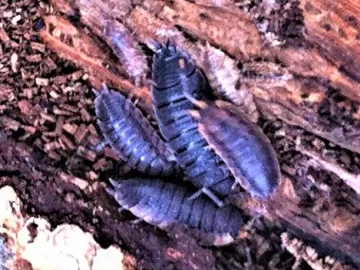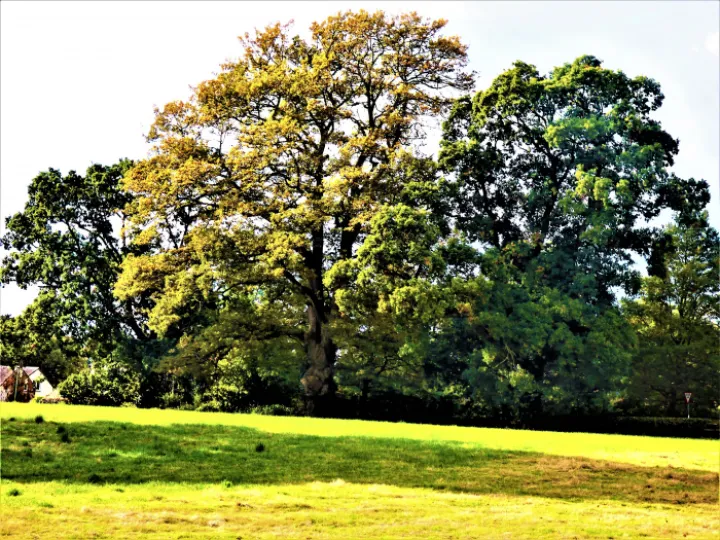







The Oak
With not a lot else to catch me eye as I walk round the fields, I have found myself have a good look at the trees. Immediately, those magnificent Oak trees scattered round the fields, standing proud in the wide open spaces call me to attention. One or two have already accepted winter's draw with leaves turned rusty falling to the ground. Others are maintaining their summer coat of green with defiance, determined not to submit until the first frosts or gales demand they do. Some have, on earlier windy nights, shed a bough whose life is ended in the tree, to start another on the ground as a home and hiding place for the creatures including the ubiquitous woodlice.
...and the Woodlice
My nearest and dearest finds these little creatures really appealing. In our garden they are for ever being evicted from their abodes, which they seem to take with an air of inevitability and "Oh well, here we go again". But there is good reason to think of these little critters as being mini heroes of the natural world. Apart from the occasional nibble at seedlings they do nothing but good, munching on decayed matter and doing a general natural recycling job. We usually would think of them as insects, where as in fact, they are crustaceans more closely related to crabs, which gives us a clue to their arrival 300 million years ago when they crawled out of water onto land. Some of their cousins have remained water bound. There are 30 species of woodlice in the British Isles with the two we most encounter being Oniscus Asellus which is found in damp places such as under tree logs and compost heaps, and Porcellio Scaber who prefer drier walls and tree trunks. To tell the difference, the former has three segments to the tips of its antenna and the latter two segments, that is if you can get one to stand still long enough to get a look before it either rolls in a ball or scurries away. It is a very benign creature having two protective mechanisms against predators such as spiders, rolling in a ball like a hedgehog or squirting out a repellent secretion.

So you see there is much more to this humble scurrier among rotted wood which is found throughout the world and goes under more than thirty different common names including Billy Button, Cheesy Bobs, Dandy Postman, Granny Grey, Parson's Pig, and Roly-Poly.
So some of those dead branches you see lying around the Field are Woodlouse Hiltons Hotels with Restaurant included, which brings me back to those oak trees on the field. Have you notices how prolific these have been with their acorn fruit this year? Some would say this is a sign of a hard winter ahead – we wait to see. It does mean copious food for animals, birds and insects. I have already spotted a Grey Squirrel hopping around in excitement as it prepared its staches for the winter.
I wonder how many winters these trees have seen and I wonder what the fields and Audlem were like when they were seedlings growing from acorns buried by a squirrel ( probably a Red Squirrel) and then forgotten. This time of year as you wander around the fields you can be given a glimpse at a bigger and longer perspective to our human life. The trees and associated wildlife help us to place our immediate, all absorbing concerns in a bigger picture of the world of the humble woodlouse and the world of the mighty oak.
Get In Touch
AudlemOnline is powered by our active community.
Please send us your news and views using the button below:
Email: editor@audlem.org





